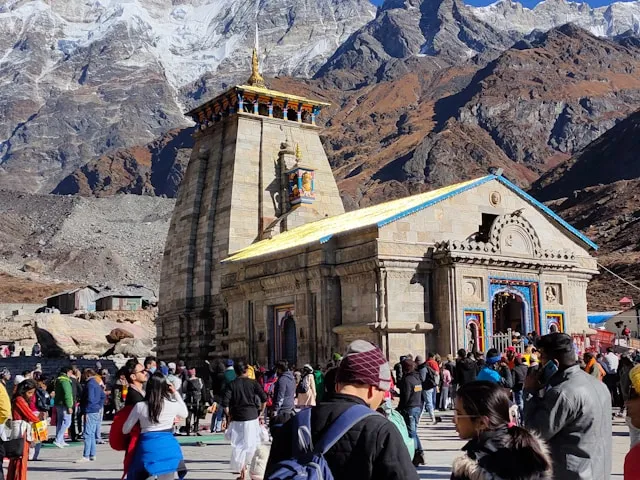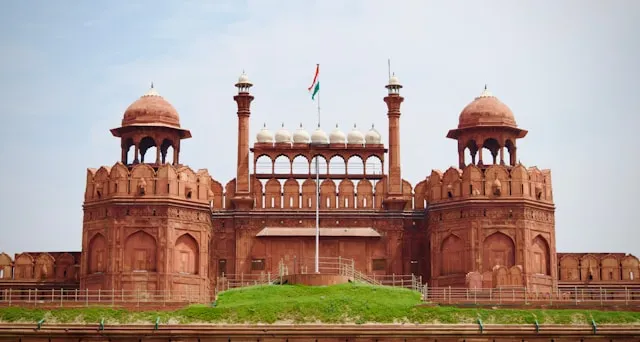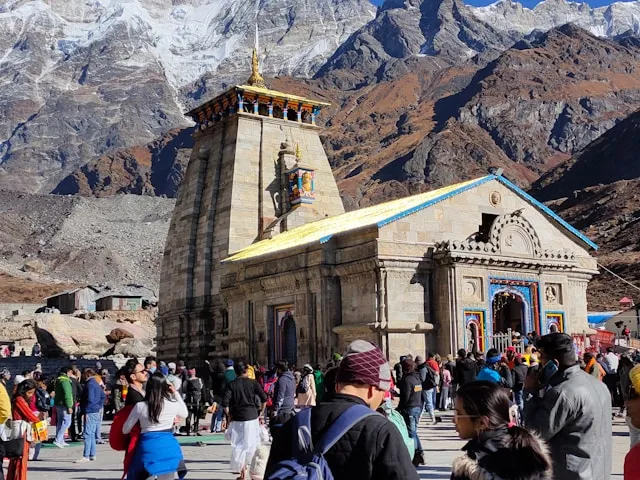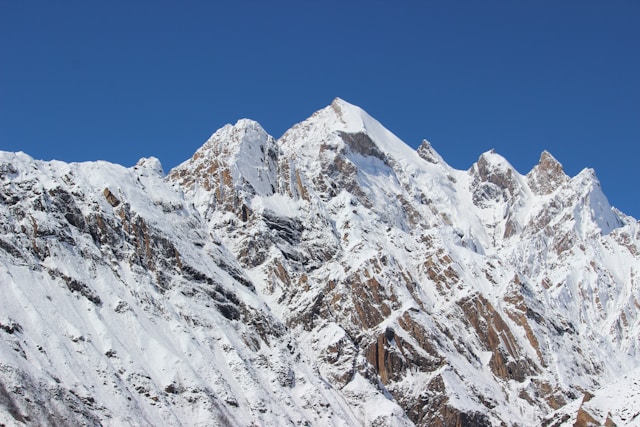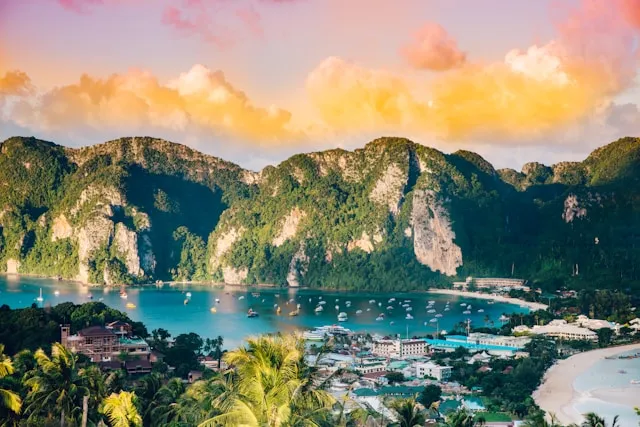Thailand Travel Guide
Thailand
About Thailand Travel Guide
Destination Overview in Thailand
Thailand, known as the “Land of Smiles,” is a captivating Southeast Asian country famous for its rich culture, stunning beaches, vibrant cities, and ancient temples. From bustling Bangkok to tranquil islands like Phuket and Koh Samui, Thailand offers an incredible blend of history, spirituality, natural beauty, and delicious cuisine. The country is renowned for its warm hospitality and diverse experiences that attract millions of tourists every year.
Top Attractions & Places to Visit in Thailand
- Historical & Cultural Sites: Grand Palace, Wat Pho, Wat Arun, Ayutthaya Historical Park
- Natural Wonders: Phi Phi Islands, Similan Islands, Erawan Waterfalls, Khao Sok National Park
- Cities & Towns: Bangkok, Chiang Mai, Pattaya, Phuket
- Markets & Bazaars: Chatuchak Market, Night Bazaar Chiang Mai, Floating Markets
- Beaches & Islands: Phuket, Koh Samui, Krabi, Koh Phi Phi
Best Time to Visit in Thailand
Best months: November to February offer cooler, dry weather ideal for sightseeing and beach activities. The rainy season from May to October brings heavy monsoon showers.
How to Reach Thailand
Air:
Major international airports include Suvarnabhumi Airport (Bangkok), Don Mueang International Airport (Bangkok), and Chiang Mai International Airport.
Rail:
Thailand has an extensive rail network connecting major cities and towns.
Road:
Well-developed highways and bus services link tourist destinations.
Local Transport:
Tuk-tuks, taxis, motorbike taxis, and songthaews (shared taxis) provide easy city travel.
Accessibility for Differently-Abled Travelers in Thailand
Many tourist spots and hotels have improved accessibility features, but some older temples and remote areas might pose challenges.
Things to Do & Experiences in Thailand
Explore vibrant street markets and sample local street food
Visit ornate Buddhist temples and participate in traditional ceremonies
Enjoy water sports and beach relaxation on stunning islands
Experience Thai massage and wellness retreats
Attend cultural festivals like Loi Krathong and Songkran
Trek in northern hill tribes and national parks
Accommodation Options in Thailand
Thailand offers accommodations ranging from luxury resorts and boutique hotels to budget hostels and guesthouses, catering to every traveler’s needs. Popular areas include Bangkok’s Sukhumvit, Chiang Mai Old City, and Phuket beaches.
Local Cuisine & Dining in Thailand
Thai cuisine is globally loved for its bold flavors and fresh ingredients. Signature dishes include Pad Thai, Tom Yum Goong, Green Curry, Som Tum (papaya salad), and Mango Sticky Rice. Street food stalls and night markets offer authentic and affordable meals.
Travel Tips & Safety in Thailand
Stay hydrated and use sunscreen in hot weather
Respect local customs and dress modestly when visiting temples
Use official taxis or ride-hailing apps like Grab for safe transport
Be cautious of scams targeting tourists
Carry a copy of your passport and important documents
Weather Details & Packing Suggestions in Thailand
Cool season (Nov-Feb): Light layers and comfortable clothes
Hot season (Mar-May): Light, breathable clothing and sun protection
Rainy season (Jun-Oct): Raincoat or umbrella recommended
Currency Exchange & Banking Facilities in Thailand
ATMs and currency exchange centers are widespread in cities and tourist hubs. The Thai Baht (THB) is the official currency.
Connectivity & SIM Card Info in Thailand
Major providers like AIS, DTAC, and TrueMove offer good network coverage. SIM cards are available at airports and local shops with ID verification. WiFi is commonly available in hotels, cafes, and shopping malls.
Itinerary Suggestions in Thailand
3-Days: Explore Bangkok’s temples, markets, and nightlife.
7-Days: Add Chiang Mai cultural tours and beach time in Phuket or Krabi.
10-Days: Include northern hill tribe trekking and island hopping adventures.
Nearby Destinations to Explore from Thailand
Cambodia (Angkor Wat) – 1-hour flight
Laos (Luang Prabang) – 1-hour flight
Myanmar (Yangon) – 1.5-hour flight
Malaysia (Kuala Lumpur) – 2-hour flight
Shopping & Souvenirs in Thailand
Popular purchases include Thai silk, handicrafts, jewelry, spices, and spa products from markets like Chatuchak and floating markets.
Cultural & Historical Background of Thailand
Thailand has a rich heritage shaped by centuries of Buddhism and monarchy. Its architecture, festivals, and arts reflect a deep cultural identity rooted in tradition and spirituality.
Best Transport Options in Thailand
Tuk-tuks and motorbike taxis are popular for short distances, while buses, trains, and domestic flights cover longer routes efficiently.
Nearest Railway Station or Airport in Thailand
Major airports: Suvarnabhumi (Bangkok), Don Mueang (Bangkok), Chiang Mai International
Major railway stations: Bangkok Hua Lamphong, Chiang Mai Station
FAQs About Thailand
Is Thailand safe for solo travelers?
Yes, with common travel precautions, Thailand is safe and welcoming.
What is the best time to visit Thailand?
November to February offers the best weather conditions.
Do I need a visa to visit Thailand?
Visa requirements depend on nationality; many countries have visa exemption or visa-on-arrival options.
Which languages are spoken in Thailand?
Thai is the official language; English is widely understood in tourist areas.
Is street food safe in Thailand?
Yes, but choose busy stalls with fresh preparation for safety.
How can I get around cities?
Use taxis, tuk-tuks, motorbike taxis, or ride-hailing apps like Grab.
Are ATMs widely available?
Yes, especially in cities and tourist zones.
What clothes should I pack?
Light, breathable clothes with modest attire for temples.
Can I use my international SIM card?
Local SIM cards are recommended for better coverage and cost-effectiveness.
Are there cultural customs to be aware of?
Always show respect at religious sites and remove shoes when entering temples or homes.
Sustainability & Responsible Tourism in Thailand
Thailand promotes sustainable tourism through conservation efforts, reducing plastic waste, and encouraging eco-friendly travel practices. Tourists are urged to respect wildlife, avoid single-use plastics, and support local communities for a positive impact.
Need a Thailand Travel Guide Customized Itinerary?
Let us create your perfect Thailand Travel Guide journey

Gallery

Weather
Location Map
Thailand
Latest Blog Posts
Latest News: Thailand Travel Guide | Best Places, Beaches, Culture & Travel Tips
What Our Travelers Say
Real experiences from our valued customers
"Thank you for the smooth and seamless arrangements for our Amritsar trip. The Golden Temple is as magnificent as everyone says."
Arvind Kumar (Bangalore, India)
"Visited India for the first time and the trip to Haridwar was amazing. Beautiful, peaceful, and well-coordinated."
Isabella Schmidt (Berlin, Germany)
"Kedarnath was simply breathtaking. A beautiful, well-organized journey. It exceeded all my expectations."
James Foster (Vancouver, Canada)
"The spiritual energy in Rishikesh was incredible. The entire trip was perfectly arranged—couldn’t have asked for more."
Emily Thompson (New York, USA)
"The Tirupati Balaji pilgrimage was smooth and fulfilling. A perfect balance of faith and comfort. Highly recommended."
Rajeev Kumar (Patna, India)
"The Shirdi Sai Baba pilgrimage was incredible. The whole process was so smooth—felt like I was in the best hands."


